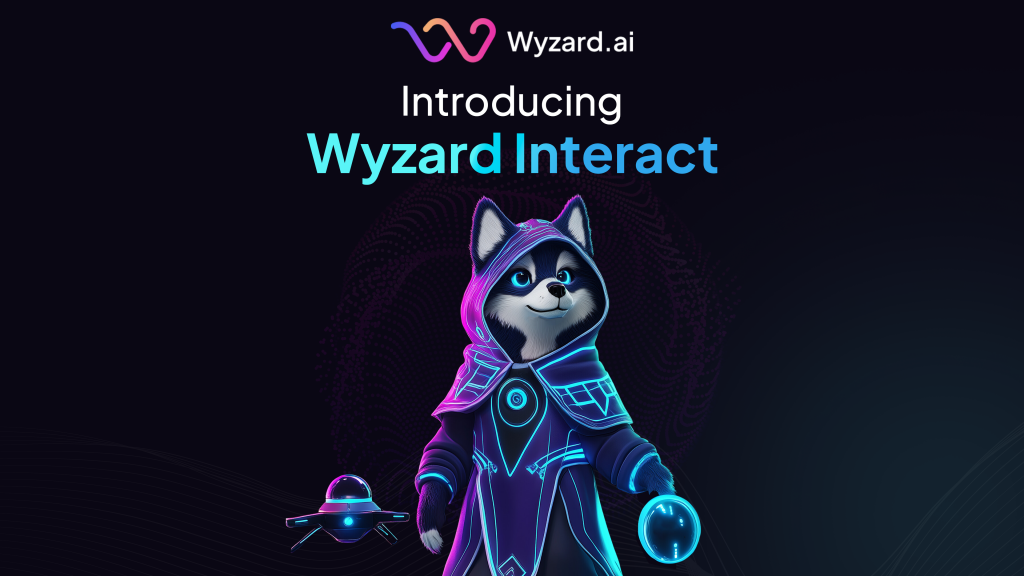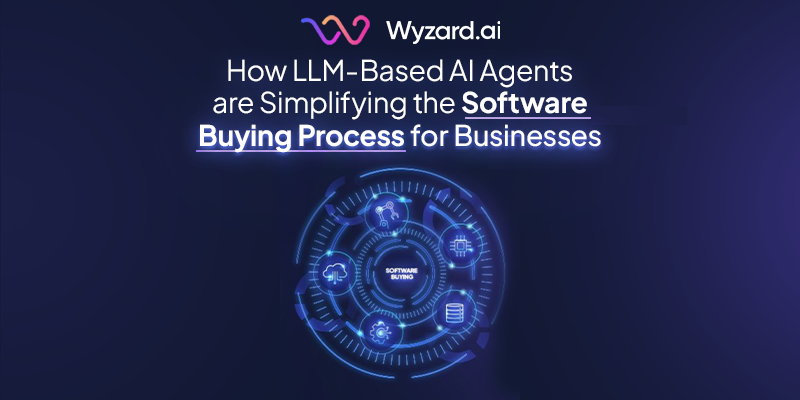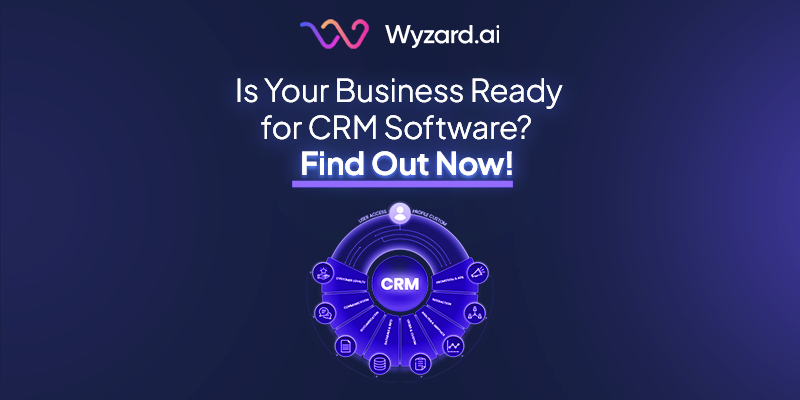Hi, I am Wyzard, your visionary guide in a world where the buying experience is transforming. The way we ...
A Complete 2024 Guide on Software Bundling Strategy
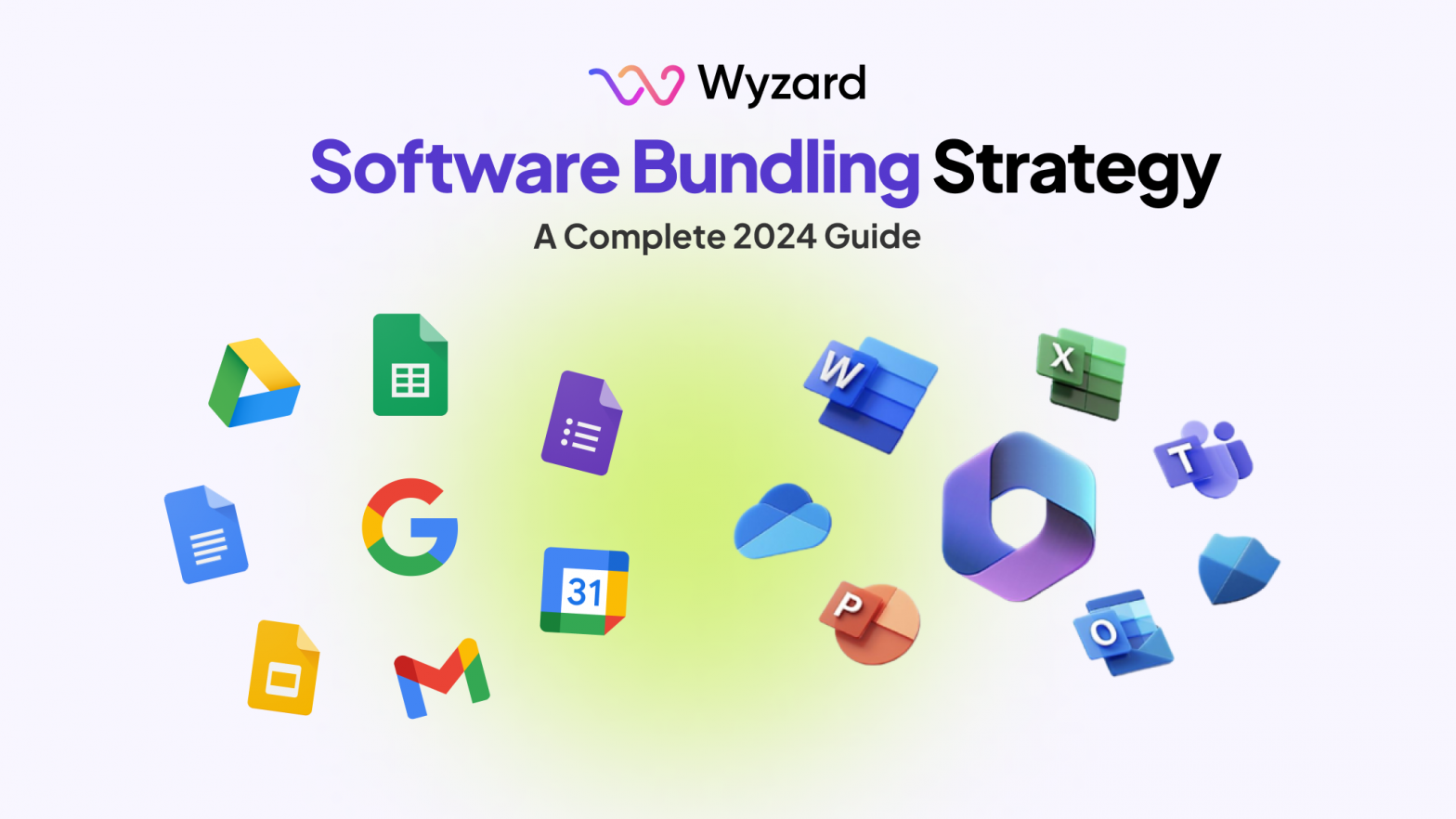

Subscribe Now
For SaaS businesses, profitability is always a top priority. While traditional marketing and revenue generation methods are still important, companies are now exploring new ways to increase their earnings.
One such strategy is software bundling.
Instead of selling software individually, SaaS companies are combining products into bundles. This approach allows them to capture more customer attention, increase spending, and boost long-term customer value compared to their competitors.
Getting your pricing and bundling strategy right is crucial. Whether you’re launching a new product or adjusting to what customers currently want, it’s important to offer bundles that meet customer needs.
This is especially true for SaaS businesses because customers are entering into an ongoing relationship with your brand. They expect continuous value from the software bundles you provide.
Software bundling gives you a significant advantage: it helps increase your revenue while offering customers the best products or services.
In this guide, we’ll cover everything you need to know about software bundling—what it is, why SaaS businesses are adopting this strategy, how it benefits consumers, and how you can create and sell your own software bundles effectively.
Let’s dive right in!
What are software bundles?
Software bundles are packages that combine multiple software products or services into a single offering.
Instead of selling each product separately, SaaS companies group them together to create a more appealing and cost-effective solution for customers.
These bundles are designed to offer greater value, both in terms of price and functionality, making them an attractive option for customers looking to fulfill multiple needs with one purchase.
For businesses, software bundles can increase sales, improve customer retention, and enhance overall customer satisfaction by providing a comprehensive solution in a single package.
Note: The software bundling we talk about here can be confused with “bundling software,” which eCommerce businesses use to sell their products in bundles. The concept is the same — but here, the products being bundled are software!
Benefits of software bundles for SaaS businesses
Software bundling offers numerous advantages for businesses, especially SaaS companies looking to optimize their offerings and enhance profitability.
Here are some key benefits:
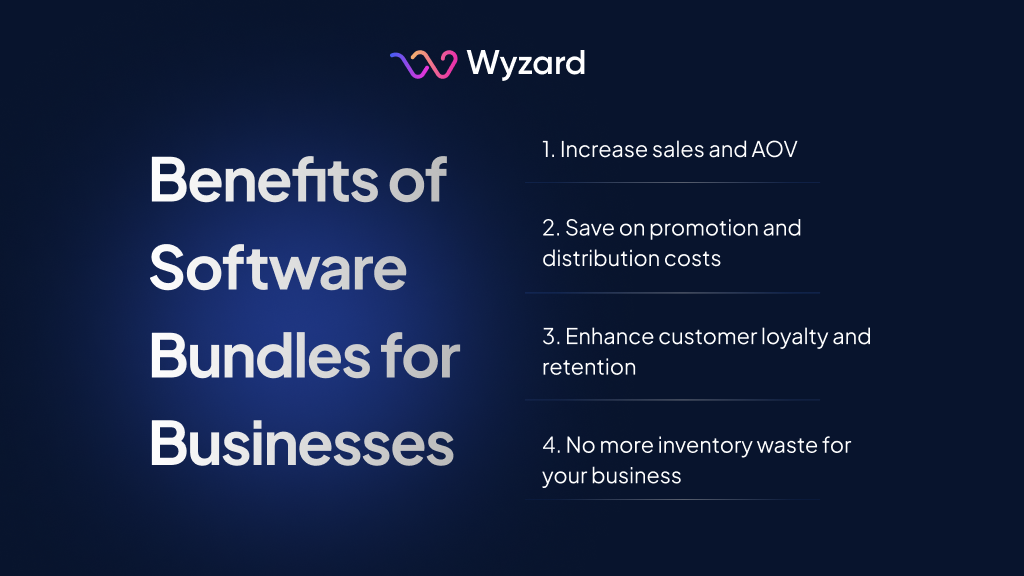
1. Increase sales and AOV
By packaging multiple software products into a single bundle, businesses can drive higher sales and increase the average order value (AOV).
Customers are more likely to purchase a bundle when they see it as a better deal compared to buying individual products.
This not only boosts one-time purchase revenue but also increases the lifetime value of customers, especially if the bundle includes subscription-based services.
As customers see the value in the bundle, they are more likely to renew their subscriptions, leading to recurring revenue.
2. Reduce inventory waste
For SaaS companies that deal with a range of products, some may not sell as well as others. These slower-moving products can be bundled with more popular offerings, making it easier to clear out inventory that might otherwise go to waste. This is especially useful for companies looking to phase out older products or introduce newer ones without holding onto excess stock.
3. Save on promotion and distribution costs
Marketing and distributing multiple products individually can be time-consuming and expensive. Bundling allows businesses to promote several products at once, reducing the overall cost of advertising and distribution. This approach streamlines the marketing efforts, making it more efficient and cost-effective. For example, a company can create a single marketing campaign for a bundle, rather than multiple campaigns for each product, saving both time and money.
4. Enhance customer loyalty and retention
Offering bundles that provide significant value to customers can lead to increased loyalty and retention. When customers feel they are getting a good deal, they are more likely to continue their relationship with the brand. This is particularly important in the SaaS industry, where customer retention is key to long-term success.
Benefits of software bundling for customers
While software bundling offers several advantages for businesses, it also provides substantial benefits for consumers. And this is why you should invest in it — because if something is beneficial for your customers — it’s already a revenue generation machine waiting to be turned on!
Here’s how customers benefit from purchasing software bundles:
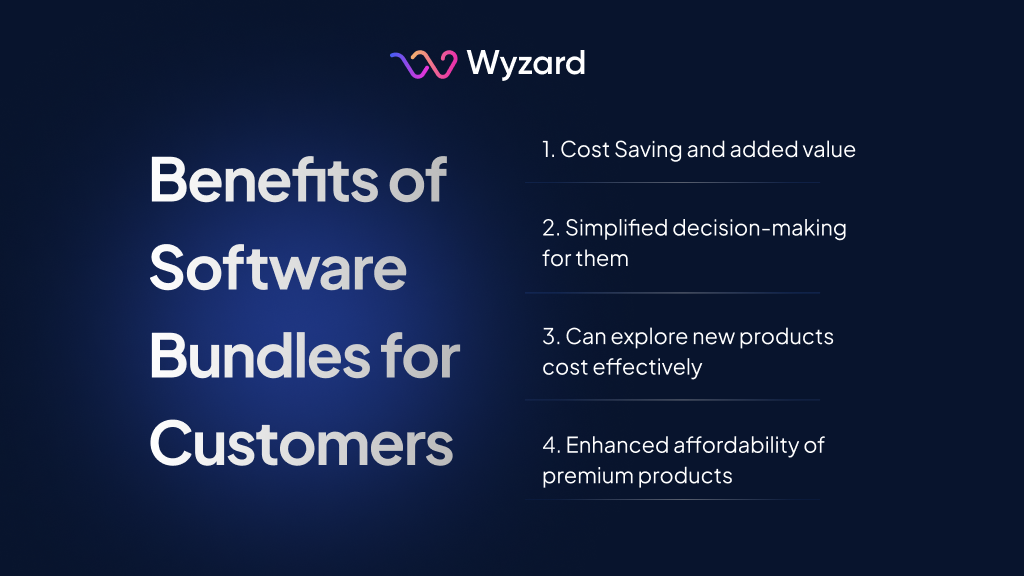
1. Cost savings
Bundles are typically priced lower than the combined cost of purchasing each product individually, making them a more economical choice. This financial value is especially appealing to consumers who want to get the most out of their budget while still accessing multiple tools or services. Discounts associated with bundles make it easier for consumers to justify the purchase, knowing they’re getting more for less.
2. Added value
Beyond cost savings, bundles offer added value by providing a more comprehensive solution to customers’ needs. Instead of purchasing separate products, consumers receive a package that addresses multiple challenges, making the purchase more worthwhile. This holistic approach can make customers feel they are getting a better deal, as they receive more functionality and features in one go. The perceived value of the bundle increases customer satisfaction, as they can achieve more with the products they’ve purchased.
3. Simplified decision-making
Choosing the right software can be overwhelming, especially when there are many options available. Software bundles simplify this process by offering pre-curated packages that reduce the need for extensive research and comparison. This not only saves time but also makes the purchasing decision easier for consumers. With fewer decisions to make, consumers can feel more confident in their choice, knowing that the bundle has been designed to meet their needs.
4. Exploration of new products
Software bundles often include products that consumers may not have considered purchasing individually. This gives them the opportunity to try out new tools or services at a discounted rate, expanding their experience with the brand. For example, a consumer might be interested in a particular software but hesitant to purchase it on its own. However, when included in a bundle, they are more likely to give it a try, leading to potential long-term use.
5. Enhanced affordability of premium products
Premium software can be expensive, but bundling can make these products more accessible. When premium products are included in a bundle, the overall cost is often reduced, making it more affordable for consumers. This allows customers to access high-quality tools and services without breaking the bank. As a result, consumers can enjoy the benefits of premium products at a price that fits their budget.
How to create a software bundling strategy for your business?
Creating a software bundling strategy can be a game-changer for SaaS businesses. It involves careful planning, understanding customer needs, and aligning your products in a way that maximizes value for both your business and your customers.
Below, we’ll walk you through the steps to create an effective software bundling strategy.
1. Understand your customers’ needs
The foundation of any successful bundling strategy is a deep understanding of your customers. What do they need? What problems are they trying to solve? Understanding these aspects is crucial because your bundles should be designed to address these specific needs.
Conduct customer research
Start by gathering insights through surveys, interviews, and analyzing support tickets. Surveys can provide quantitative data about which features or products your customers value most. Interviews with key decision-makers give you qualitative insights into their pain points and priorities. Additionally, analyzing support tickets can help identify recurring issues that your bundle could potentially solve.
Identify key purchase drivers
After gathering customer insights, focus on the factors that drive their purchasing decisions. Are there complementary products they frequently use together? What pain points do they encounter that could be resolved with a bundled solution? By pinpointing these drivers, you can craft bundles that directly align with what your customers are looking for.
2. Segment your customers
Not all customers have the same needs or budget. Segmenting your customer base allows you to create bundles that are tailored to different groups, making your offerings more relevant and appealing.
Create buyer personas
Group your customers into different personas based on their needs and purchasing behavior. For example:
- Entry-Level Buyers: Cost-conscious customers looking for essential features at the lowest possible price.
- Mainstream Buyers: Mid-market customers who seek comprehensive solutions tailored to their specific industry or use case.
- Advanced Buyers: Enterprise-level customers who need advanced capabilities, such as predictive analytics and global scalability, and are willing to pay a premium for them.
Tailor bundles to each persona
Once you have your personas, develop bundles that cater to each group’s unique needs and preferences. For instance, an entry-level bundle might include just the core software with minimal add-ons, while an advanced bundle could offer a full suite of tools, premium support, and additional features. This tailored approach ensures that each customer segment sees value in the bundle that aligns with their needs and budget.
3. Structure bundles to incentivize desired outcomes
The next step is to design your bundles in a way that encourages customers to make the purchase while also driving business goals.
Offer discounts and incentives
One effective way to make bundles more appealing is by offering discounts or additional incentives. For example, you could offer a percentage discount on a bundle that includes three or more products. You could also provide service credits or free trials for premium products within the bundle, making it easier for customers to see the value in upgrading.
Use anchor products
The concept of an “anchor product” involves leading with the must-have product in the bundle. This is the product that customers are most likely already interested in. By including it in a bundle, you create a halo effect that increases the perceived value of the other products in the bundle. This strategy can be particularly effective in driving sales, as customers feel they’re getting more for their money.
Create tiered bundles
Another approach is to offer tiered bundles, such as Good-Better-Best options. Each tier offers progressively more features and benefits, catering to different levels of need and budget. This structure allows customers to choose the bundle that best fits their requirements while giving them the option to upgrade as their needs grow.
Mix recurring and non-recurring products
If your business offers both recurring services (like subscriptions) and one-time purchases (like downloadable tools), consider bundling these together. This mix can make the bundle more attractive by providing ongoing value (through the recurring service) and immediate utility (through the non-recurring product).
4. Communicate the Value of Your Bundles
No matter how well-crafted your bundles are, they won’t sell themselves. You need to communicate the value clearly and effectively.
Highlight the benefits
When marketing your bundles, focus on the benefits customers will receive. How will the bundle solve their problems or make their work easier? Make sure your messaging is clear and straightforward, emphasizing the value of the bundled products working together.
Simplify the decision-making process
Bundles should simplify the buying process, not complicate it. Position your bundles as a hassle-free solution that saves time and effort for the customer. Make it easy for them to understand what’s included in the bundle and why it’s a better deal than purchasing products individually.
5. Continuously optimize your bundles
Creating the perfect bundle isn’t a one-time task; it requires ongoing optimization based on customer feedback and sales data.
Track performance
Monitor how each bundle performs in terms of sales, customer satisfaction, and retention rates. Pay attention to which bundles are the most popular and which ones might need improvement.
Gather customer feedback
Regularly survey your customers to gather their thoughts on the bundles. Are there products or features they wish were included? Are there aspects of the bundle they find unnecessary? Use this feedback to refine and improve your bundles.
Adapt to changing needs
Customer needs and market conditions can change over time, so it’s important to stay flexible. Be ready to adjust your bundles or even create new ones to meet evolving demands. This adaptability will help keep your offerings relevant and ensure that your customers continue to see value in your bundles.
5 Tips to sell your software bundle effectively
Follow the tips mentioned below to acquire more customers for your software bundles:
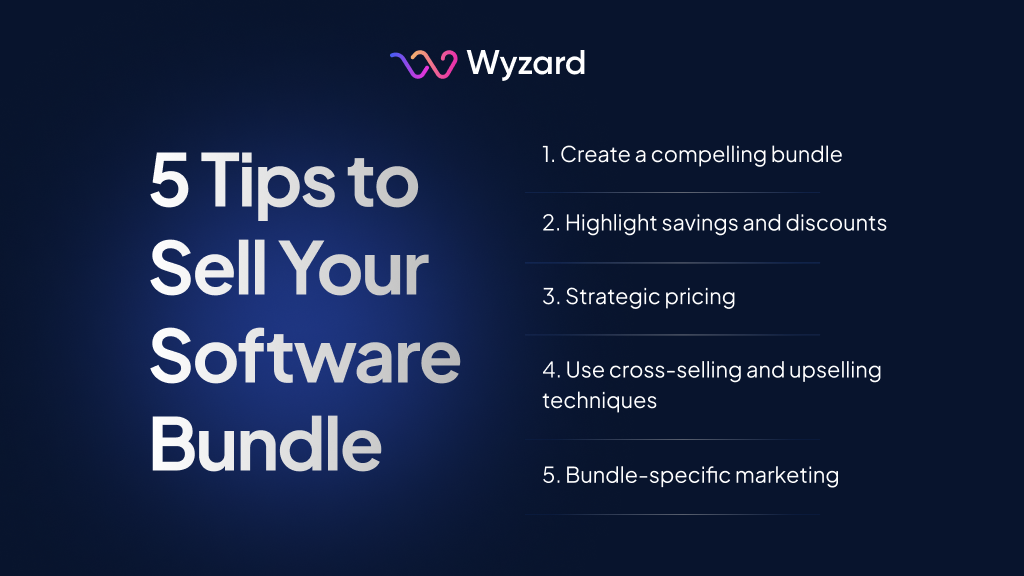
1. Create a compelling bundle
The first step in selling your software bundle is to ensure it’s something your customers genuinely want. Start by identifying an anchor product—something your customers already love or need—and then build around it. Add complementary products that enhance the value of the anchor product. The key is to create a bundle that offers more value together than the individual products would alone. By combining products that work seamlessly together, you’re providing a solution that’s greater than the sum of its parts.
2. Highlight savings and discounts
Everyone loves a good deal, so make sure you clearly highlight the savings customers get when they choose your bundle. Display the percentage savings compared to purchasing each product separately, and don’t forget to mention any exclusive discounts or bonuses that come with the bundle. Whether it’s a free trial, extra features, or a limited-time offer, these incentives can make the bundle even more appealing. Make the financial benefits clear in your marketing to attract budget-conscious buyers.
3. Strategic pricing
Pricing your bundle strategically is crucial. Consider using limited-time offers to create urgency, encouraging customers to act quickly. You can also offer starter pricing that increases upon renewal, making it easier for new customers to commit. Flexible payment options, like installment plans, can also make the bundle more accessible. The goal is to ensure customers can easily see the value in your bundle and feel confident in their decision to purchase.
4. Use cross-selling and upselling techniques
Leverage your existing customer base by offering your bundles as upsell options during sales interactions. Train your sales team to identify when a bundle could meet additional customer needs, making it an attractive upgrade. Personalized recommendations based on customer behavior can also be effective, helping to match the right bundle with the right customer.
5. Bundle-specific marketing
Finally, create marketing materials specifically for your bundles. Dedicated landing pages, clear breakdowns of what’s included, and visual aids like infographics can all help communicate the value of your bundle. By making it easy for customers to understand what they’re getting and why it’s a great deal, you’ll increase your chances of making the sale.
Sell your software in bundles with Wyzard!
By partnering with Wyzard, you can seamlessly integrate your software into powerful bundles tailored to meet the specific needs of businesses.
Imagine your keyword research tool featured in an SEO or marketing bundle alongside other complementary tools. This not only adds value to the bundle but also opens up new avenues for your software to reach a broader audience.
Businesses that may not have discovered your product independently can now find it as part of a comprehensive solution, increasing your visibility and potential sales.
Wyzard makes it easy for you to be part of these curated bundles, helping your software gain traction in the market.
Whether you’re looking to boost sales or expand your reach, Wyzard’s offers an opportunity to feature your product in front of businesses that are actively seeking solutions like yours.
Ready to see how Wyzard can help you grow your business? Book a demo today and start selling your software in bundles that deliver value and results!
Other blogs
The latest industry news, interviews, technologies, and resources.
March 17, 2025
How LLM-Based AI Agents are Simplifying the Software Buying Process for Businesses
Let’s talk about something that’s becoming a game-changer in our daily lives: AI agents. Think of them as your ...

March 11, 2025
Is Your Business Ready for CRM Software? Find Out Now!
Running a small business can feel like juggling a million things at once. You are busy with customers, ensuring ...

Subscribe
Today!
Error: Contact form not found.
Subscribe to learn about new product features, the latest in technology, solutions, and updates.
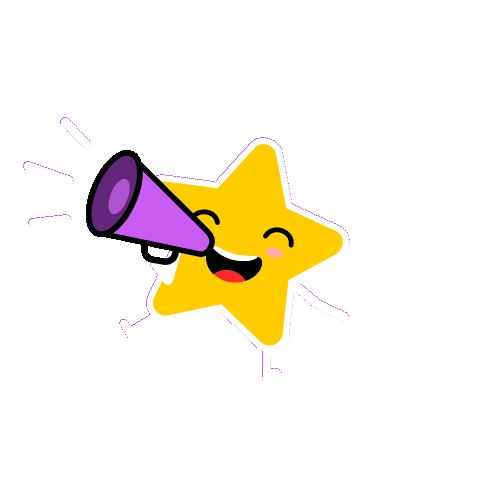 Meet Us at
Meet Us at 
